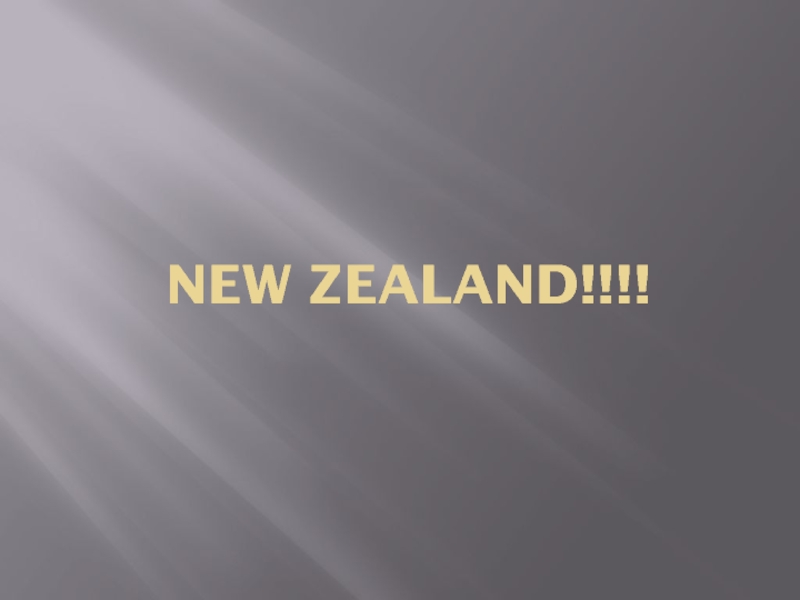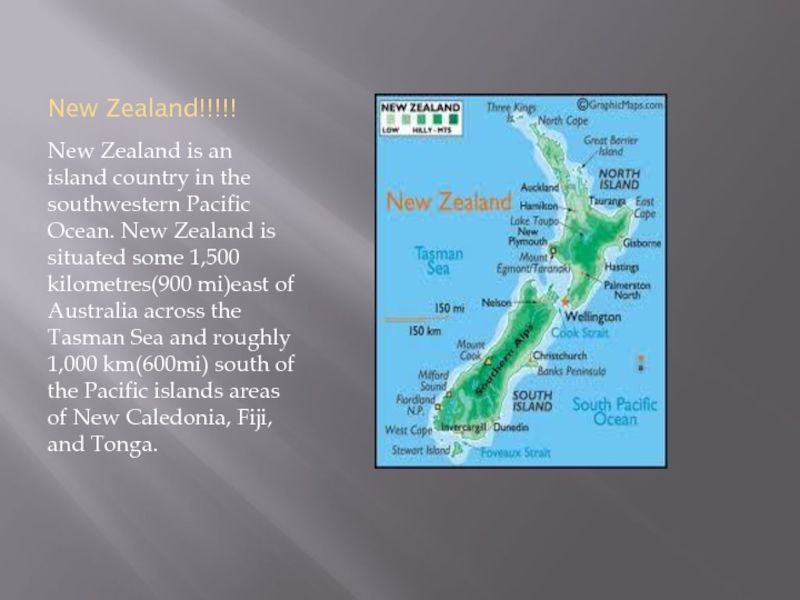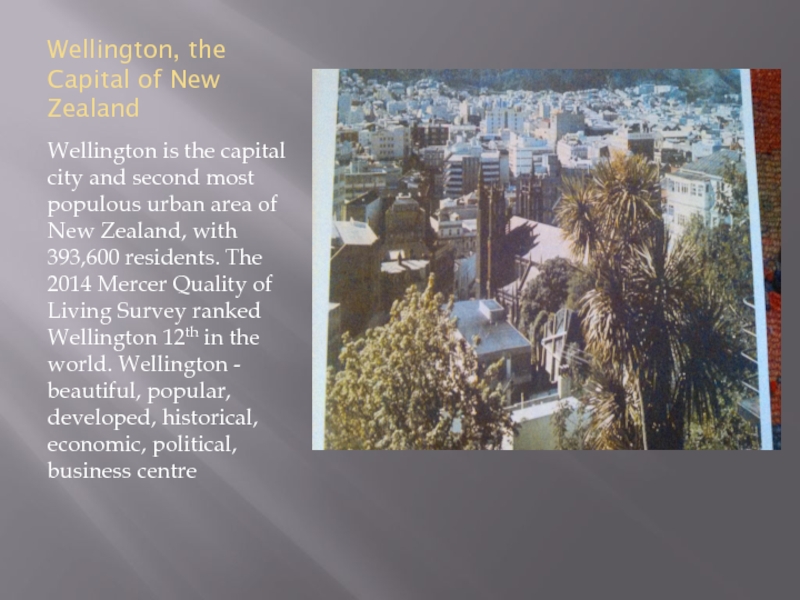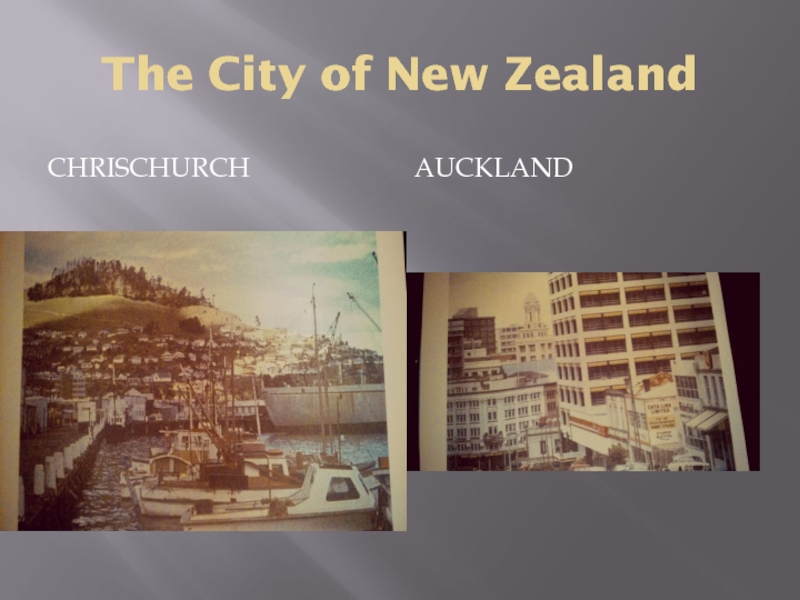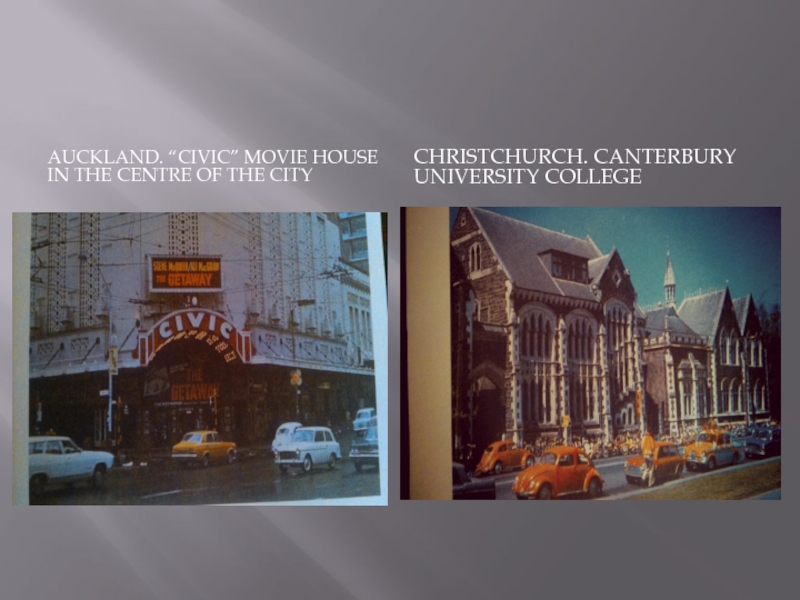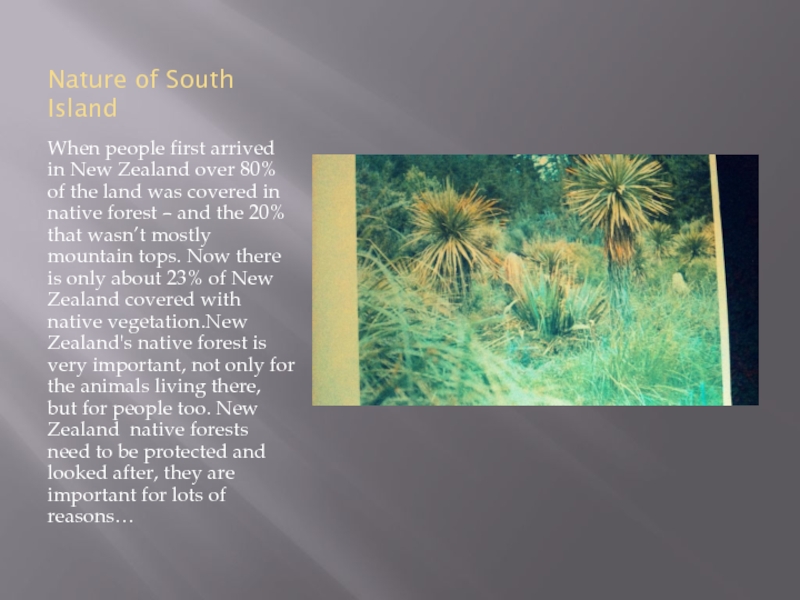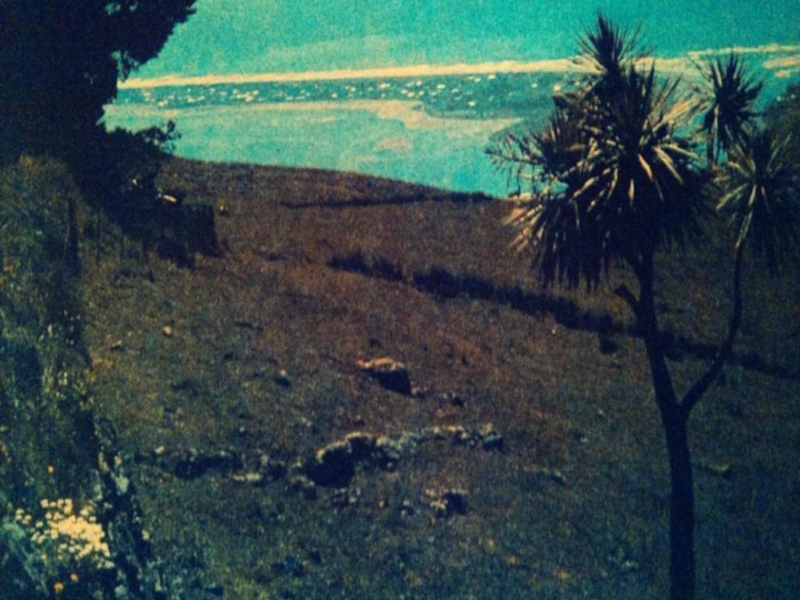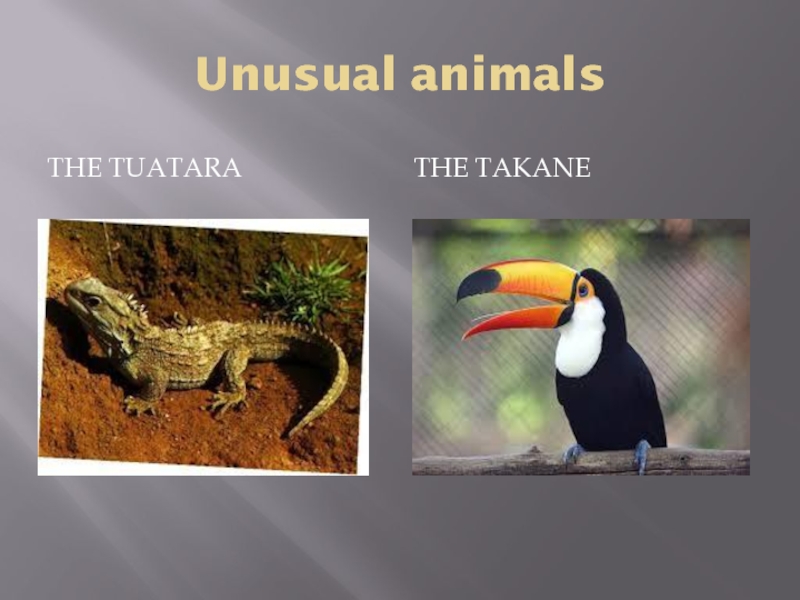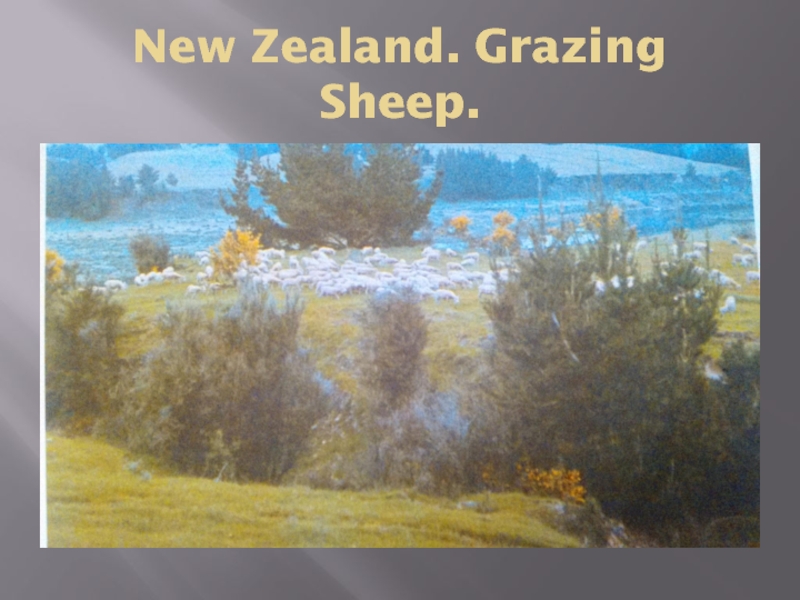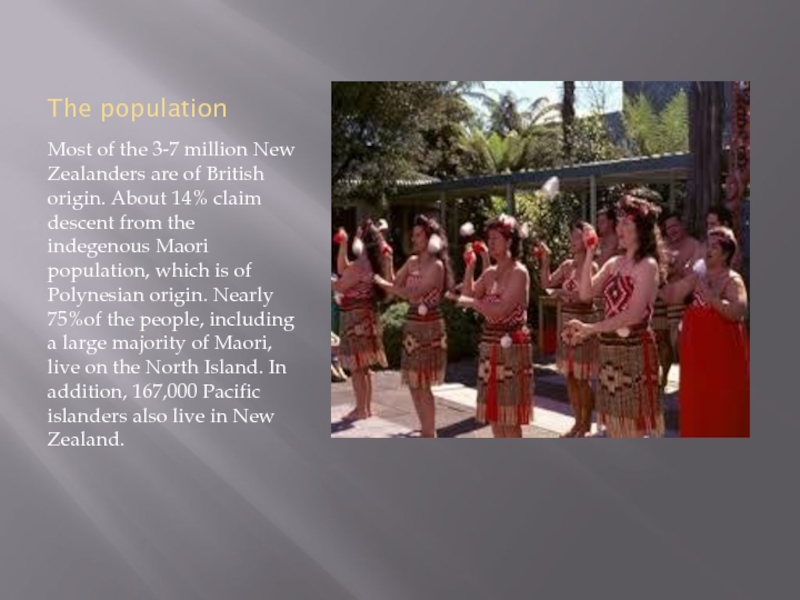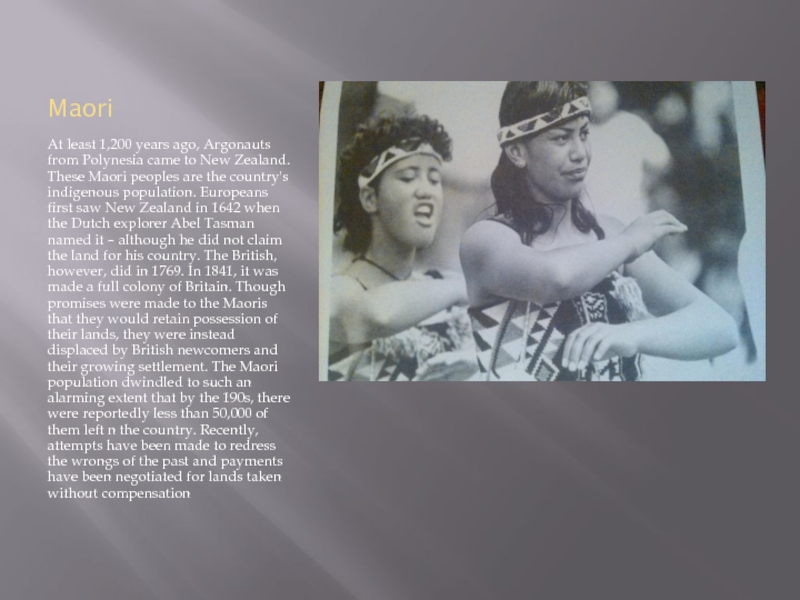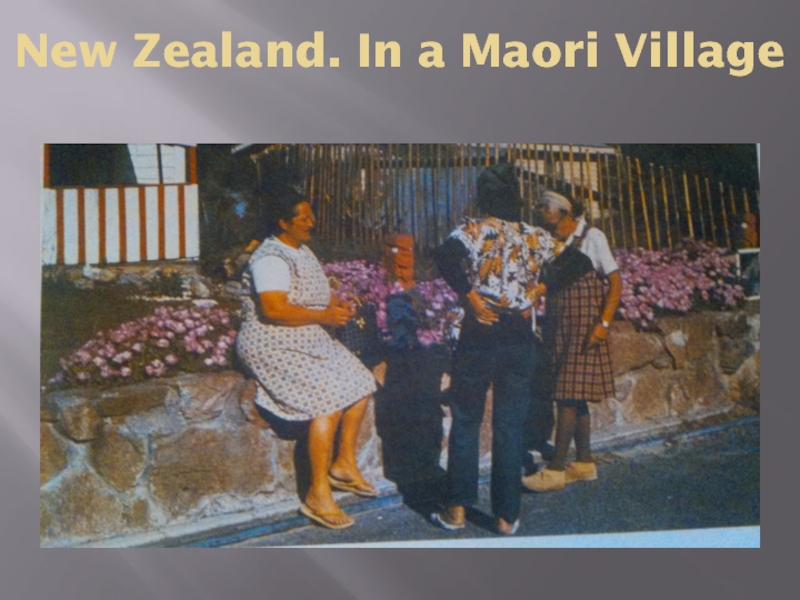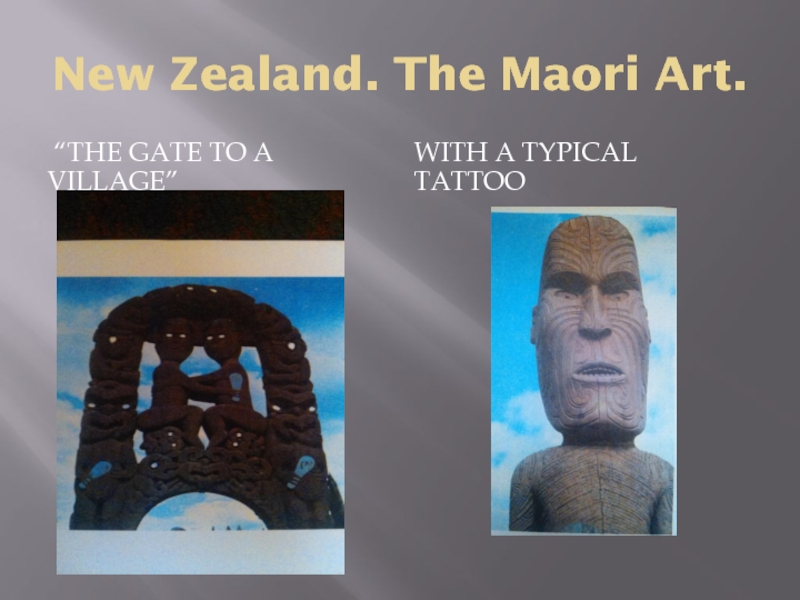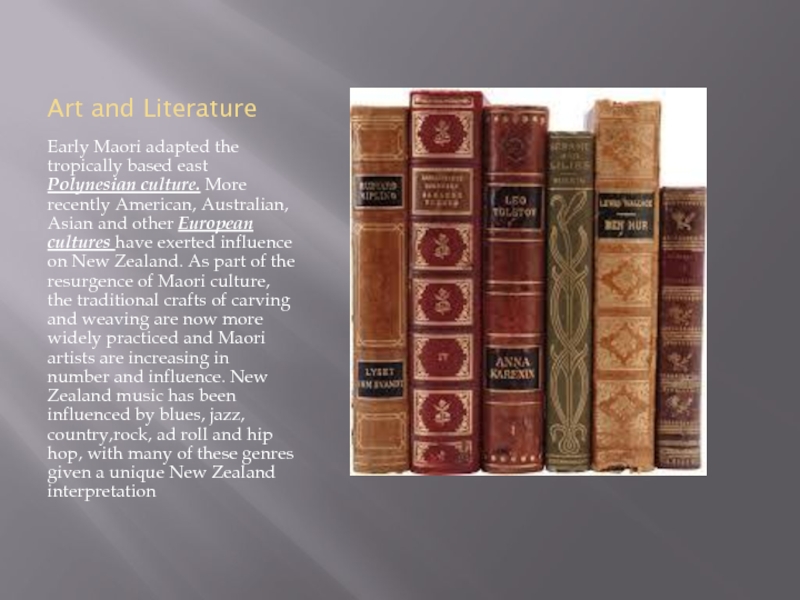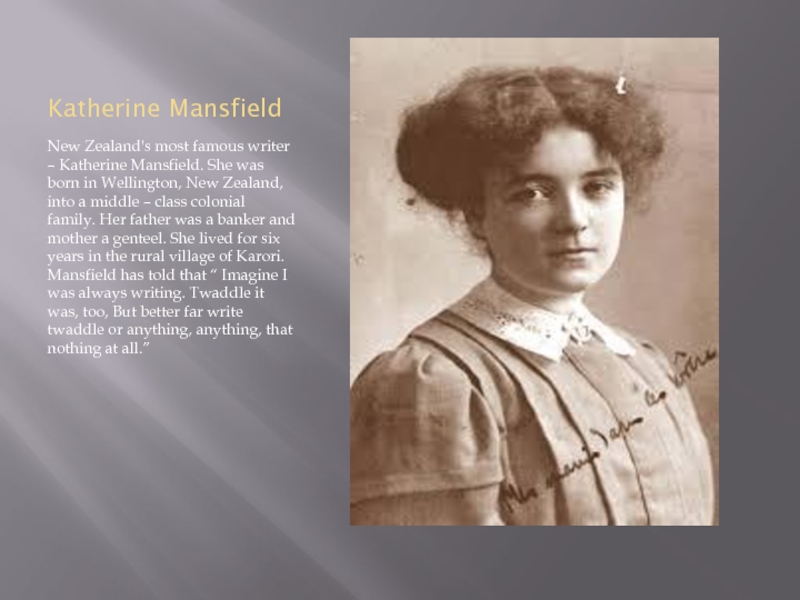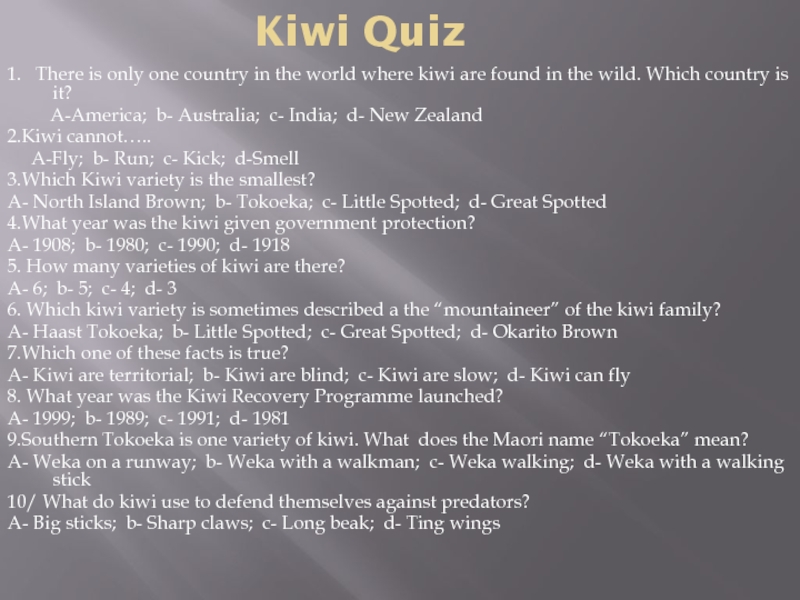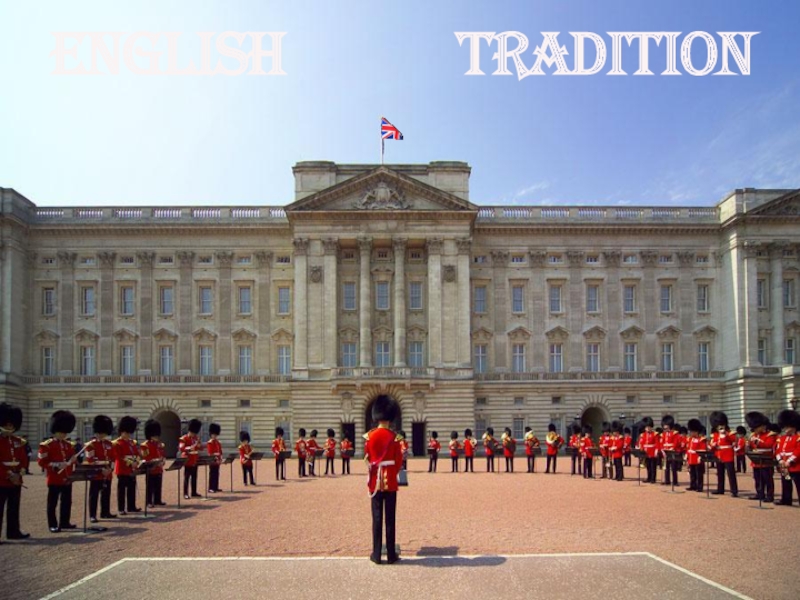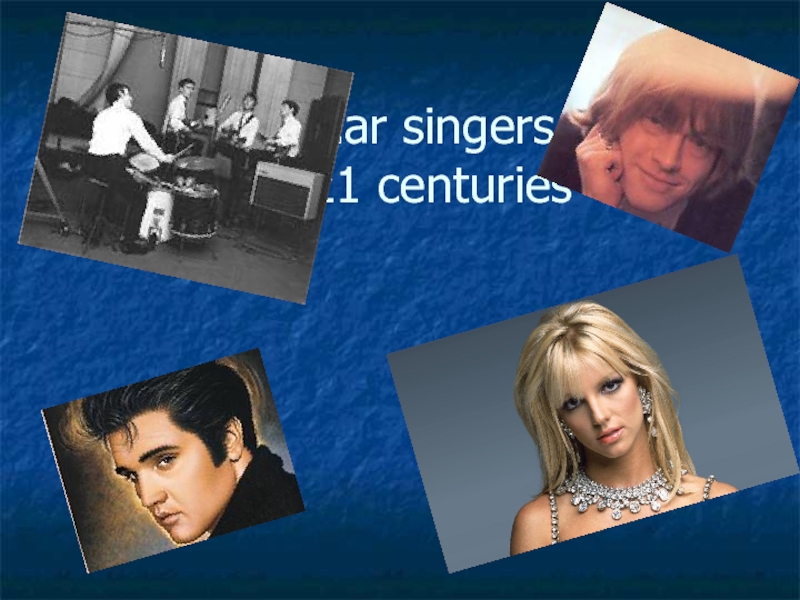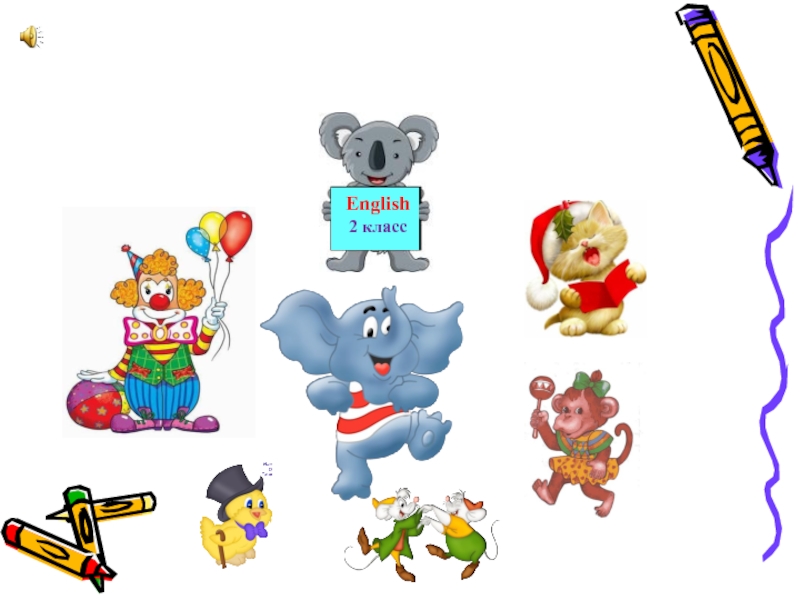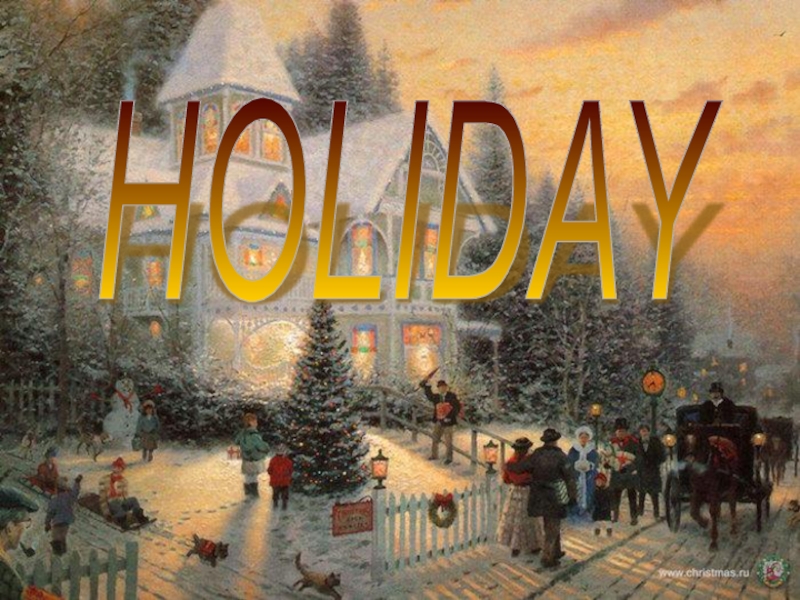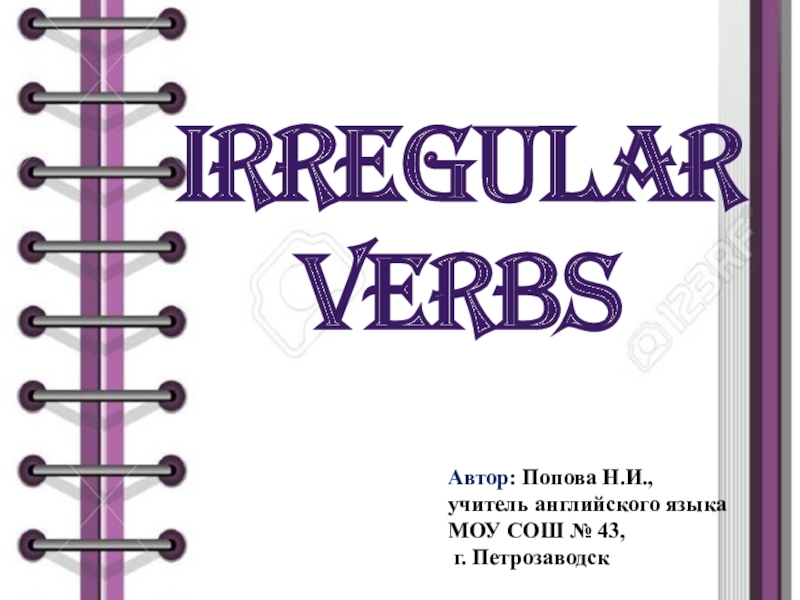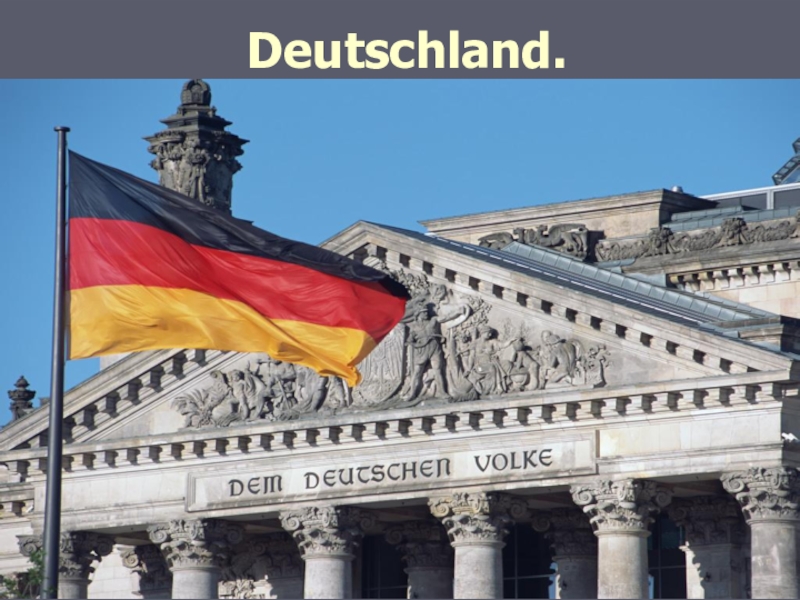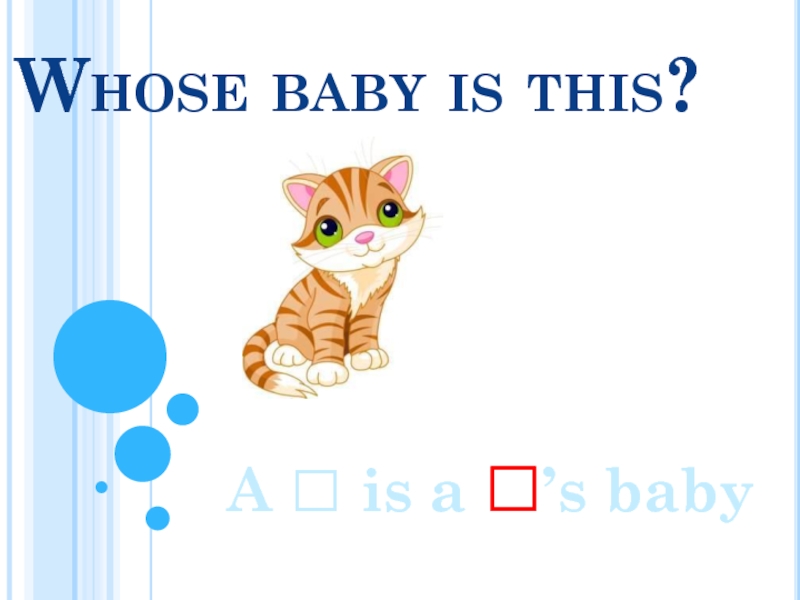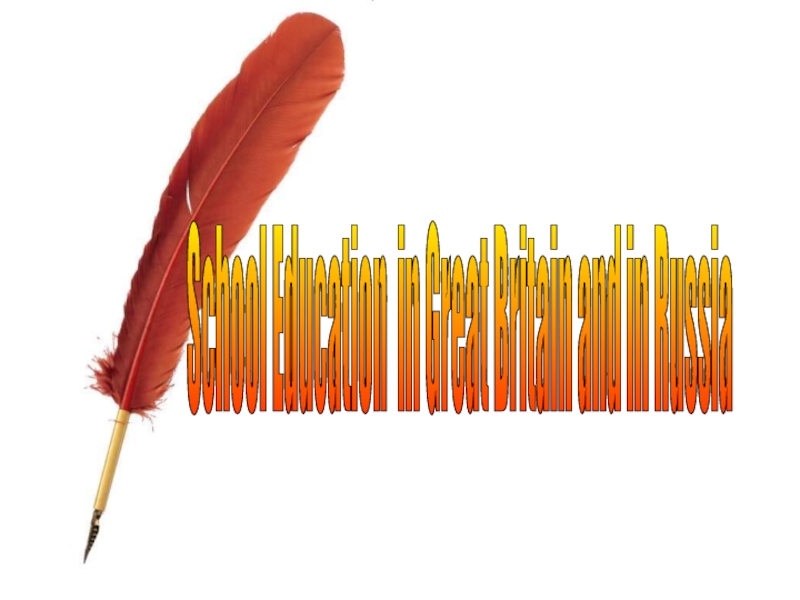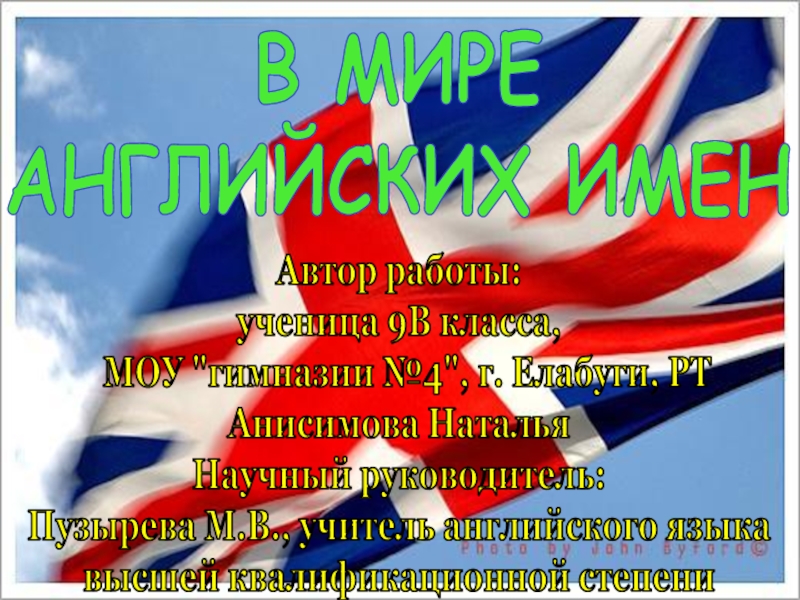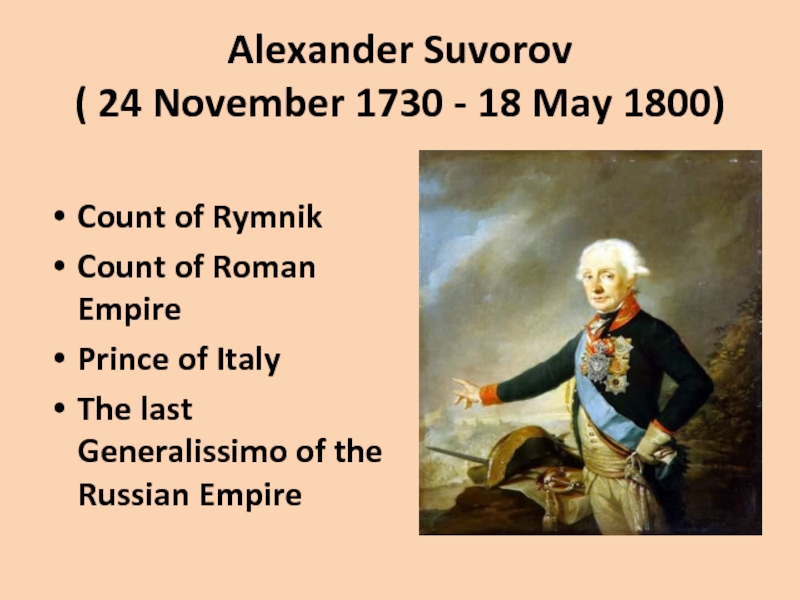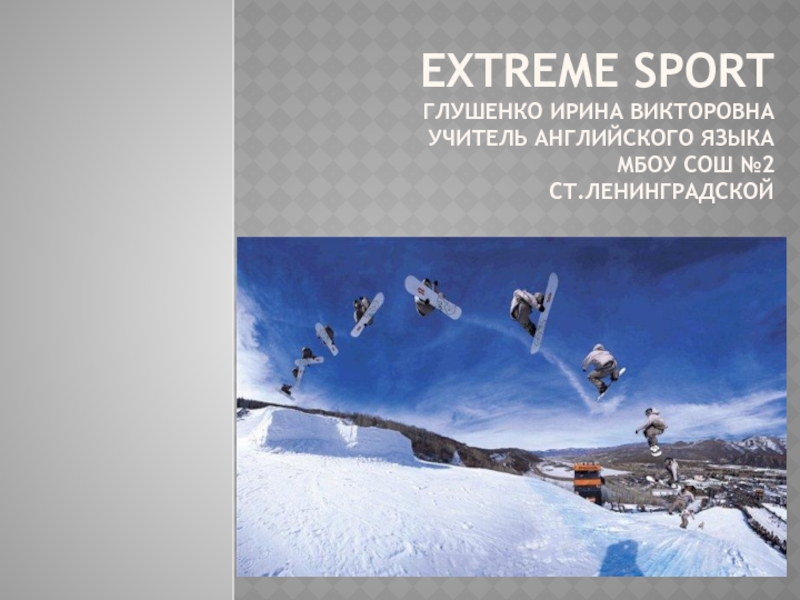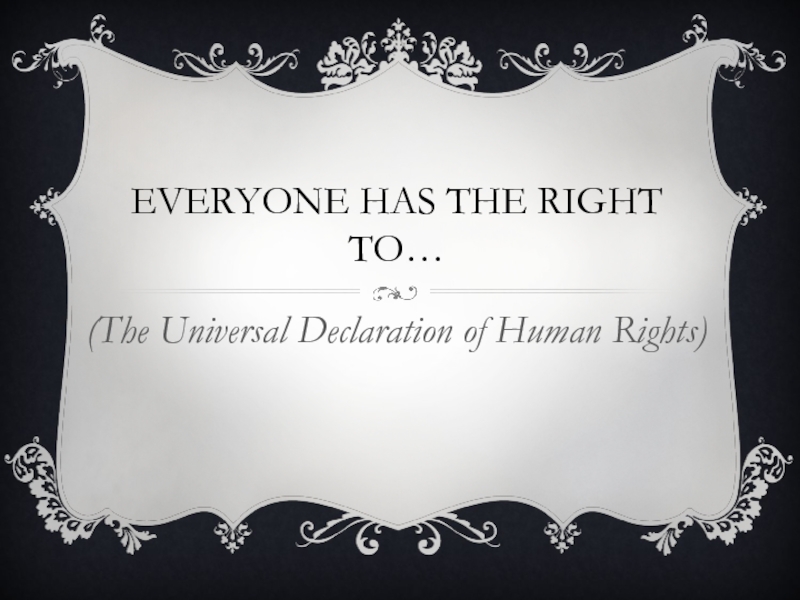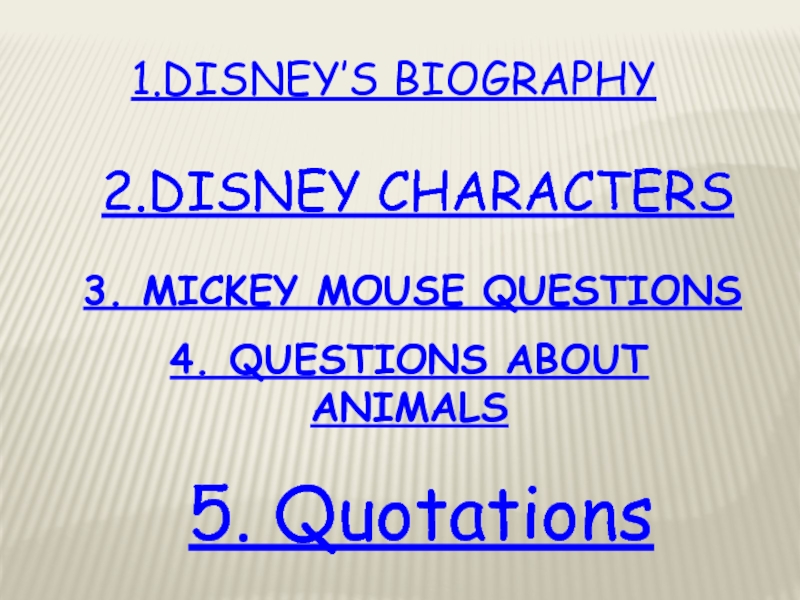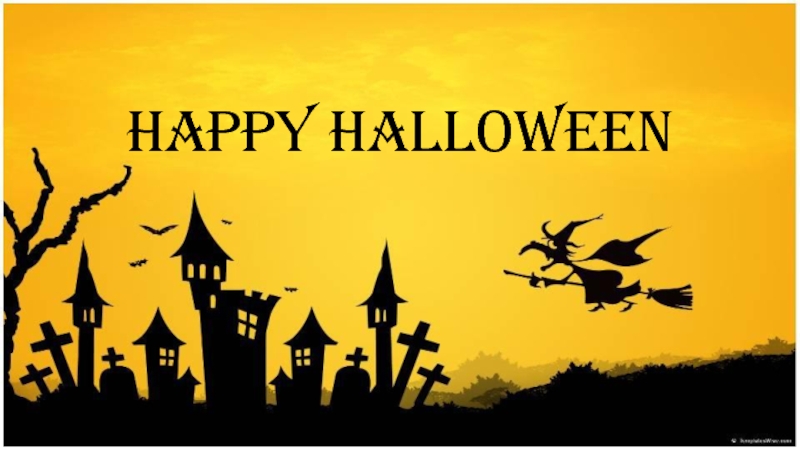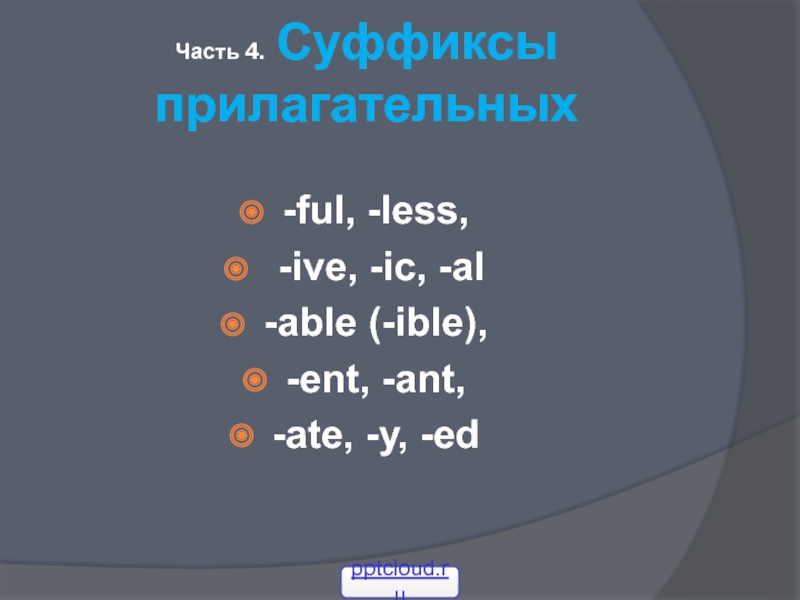Разделы презентаций
- Разное
- Английский язык
- Астрономия
- Алгебра
- Биология
- География
- Геометрия
- Детские презентации
- Информатика
- История
- Литература
- Математика
- Медицина
- Менеджмент
- Музыка
- МХК
- Немецкий язык
- ОБЖ
- Обществознание
- Окружающий мир
- Педагогика
- Русский язык
- Технология
- Физика
- Философия
- Химия
- Шаблоны, картинки для презентаций
- Экология
- Экономика
- Юриспруденция
Новая Зеландия
Содержание
- 1. Новая Зеландия
- 2. New Zealand!!!!!New Zealand is an island country
- 3. Wellington, the Capital of New ZealandWellington is
- 4. The City of New ZealandChrischurchAuckland
- 5. Auckland. “Civic” Movie House in the Centre of the CityChristchurch. Canterbury University College
- 6. Nature of South IslandWhen people first arrived
- 7. Слайд 7
- 8. Unusual animalsThe tuataraThe takane
- 9. New Zealand. Grazing Sheep.
- 10. The populationMost of the 3-7 million New
- 11. MaoriAt least 1,200 years ago, Argonauts from
- 12. New Zealand. In a Maori Village
- 13. New Zealand. The Maori Art. “The Gate to a Village”With a Typical Tattoo
- 14. Art and LiteratureEarly Maori adapted the tropically
- 15. Katherine MansfieldNew Zealand's most famous writer –
- 16. Kiwi Quiz1. There is only one
- 17. Скачать презентанцию
New Zealand!!!!!New Zealand is an island country in the southwestern Pacific Ocean. New Zealand is situated some 1,500 kilometres(900 mi)east of Australia across the Tasman Sea and roughly 1,000 km(600mi) south
Слайды и текст этой презентации
Слайд 3Wellington, the Capital of New Zealand
Wellington is the capital city
and second most populous urban area of New Zealand, with
393,600 residents. The 2014 Mercer Quality of Living Survey ranked Wellington 12th in the world. Wellington - beautiful, popular, developed, historical, economic, political, business centreСлайд 5Auckland. “Civic” Movie House in the Centre of the City
Christchurch.
Canterbury University College
Слайд 6Nature of South Island
When people first arrived in New Zealand
over 80% of the land was covered in native forest
– and the 20% that wasn’t mostly mountain tops. Now there is only about 23% of New Zealand covered with native vegetation.New Zealand's native forest is very important, not only for the animals living there, but for people too. New Zealand native forests need to be protected and looked after, they are important for lots of reasons…Слайд 10The population
Most of the 3-7 million New Zealanders are of
British origin. About 14% claim descent from the indegenous Maori
population, which is of Polynesian origin. Nearly 75%of the people, including a large majority of Maori, live on the North Island. In addition, 167,000 Pacific islanders also live in New Zealand.Слайд 11Maori
At least 1,200 years ago, Argonauts from Polynesia came to
New Zealand. These Maori peoples are the country's indigenous population.
Europeans first saw New Zealand in 1642 when the Dutch explorer Abel Tasman named it – although he did not claim the land for his country. The British, however, did in 1769. In 1841, it was made a full colony of Britain. Though promises were made to the Maoris that they would retain possession of their lands, they were instead displaced by British newcomers and their growing settlement. The Maori population dwindled to such an alarming extent that by the 190s, there were reportedly less than 50,000 of them left n the country. Recently, attempts have been made to redress the wrongs of the past and payments have been negotiated for lands taken without compensationСлайд 14Art and Literature
Early Maori adapted the tropically based east Polynesian
culture. More recently American, Australian, Asian and other European cultures
have exerted influence on New Zealand. As part of the resurgence of Maori culture, the traditional crafts of carving and weaving are now more widely practiced and Maori artists are increasing in number and influence. New Zealand music has been influenced by blues, jazz, country,rock, ad roll and hip hop, with many of these genres given a unique New Zealand interpretationСлайд 15Katherine Mansfield
New Zealand's most famous writer – Katherine Mansfield. She
was born in Wellington, New Zealand, into a middle –
class colonial family. Her father was a banker and mother a genteel. She lived for six years in the rural village of Karori. Mansfield has told that “ Imagine I was always writing. Twaddle it was, too, But better far write twaddle or anything, anything, that nothing at all.”Слайд 16Kiwi Quiz
1. There is only one country in the
world where kiwi are found in the wild. Which country
is it?A-America; b- Australia; c- India; d- New Zealand
2.Kiwi cannot…..
A-Fly; b- Run; c- Kick; d-Smell
3.Which Kiwi variety is the smallest?
A- North Island Brown; b- Tokoeka; c- Little Spotted; d- Great Spotted
4.What year was the kiwi given government protection?
A- 1908; b- 1980; c- 1990; d- 1918
5. How many varieties of kiwi are there?
A- 6; b- 5; c- 4; d- 3
6. Which kiwi variety is sometimes described a the “mountaineer” of the kiwi family?
A- Haast Tokoeka; b- Little Spotted; c- Great Spotted; d- Okarito Brown
7.Which one of these facts is true?
A- Kiwi are territorial; b- Kiwi are blind; c- Kiwi are slow; d- Kiwi can fly
8. What year was the Kiwi Recovery Programme launched?
A- 1999; b- 1989; c- 1991; d- 1981
9.Southern Tokoeka is one variety of kiwi. What does the Maori name “Tokoeka” mean?
A- Weka on a runway; b- Weka with a walkman; c- Weka walking; d- Weka with a walking stick
10/ What do kiwi use to defend themselves against predators?
A- Big sticks; b- Sharp claws; c- Long beak; d- Ting wings
